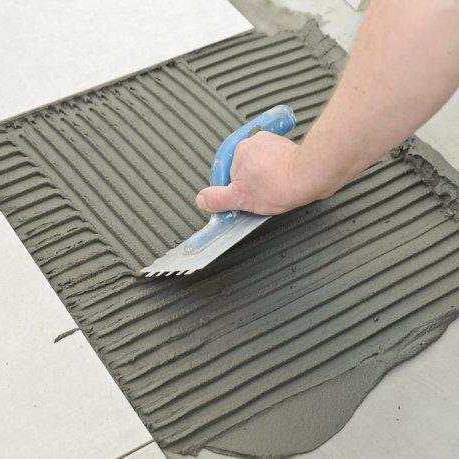
Oct . 27, 2025 13:10 Back to list
Mortar Bonding Agent: High Adhesion, Easy Mix, Durable
Why contractors keep a Mortar Bonding Agent in the truck (and what’s changed lately)
Out on job sites—from chilly northern facades to humid coastal pools—bond failure is the ghost everyone’s seen. The EIFS BONDING MORTAR ADDITIVE from CNJZ Chemical (origin: NO.1 Building, Technology Center, High-Tech Zone, Shijiazhuang City, Hebei Province, China) is one of those quiet helpers that, frankly, saves callbacks. Product type: mixture for exclusive usage; first released 2019-09-18. And yes, I’ve watched crews switch additives mid-project when substrate moisture or a surprise cold snap threatened adhesion. Not pretty, but solvable.

What’s trending (and why specifiers care)
- Low-VOC, REACH-aware polymers—air quality rules aren’t easing up.
- Cold-weather workability and longer open time for “real-world” schedules.
- Compatibility with EIFS, thin-set tile, and repair mortars in one SKU—less warehouse clutter.
- Traceability: batch QC, pull-off data, and clear SDS. Many customers say this is “non-negotiable” now.
Typical specs (field-proven, lab-verified)
| Product | EIFS BONDING MORTAR ADDITIVE |
| Chemistry | Styrene–Acrylic polymer dispersion (contractor-grade) |
| Appearance | Milky liquid, ready-to-use |
| Solids content | ≈ 45% (real-world may vary ±2%) |
| Recommended dosage | 10–20% polymer bwoc, or 1:1 with mix water (check mix design) |
| Bond strength | ASTM C882 slant shear ≥ 10 MPa @ 28d; EN 1542 pull-off ≥ 1.5 MPa |
| Service temperature | -20°C to +80°C (after cure) |
| VOC | Low-VOC, waterborne |
| Shelf life | 12 months unopened, 5–35°C |
Where it shines
EIFS basecoat/adhesive, re-skim of chalky plaster, tile-over-tile in wet zones, concrete patching, and masonry façades. Many crews like it for tricky substrates that feel “powdery.” It seems that Mortar Bonding Agent also smooths out day-to-day water variability—handy when the site hose pressure changes.
Process flow (short version)
- Materials: clean sand/cement or pre-bagged mortar, the Mortar Bonding Agent, potable water.
- Prep: ICRI CSP 2–4; remove dust, oil; SSD but no standing water.
- Mix: add additive to water, then powder; 3–5 min mix; rest 2 min; remix 1 min.
- Apply: trowel/brush/roller depending on system; respect open time.
- Cure: protect from rain/freeze; 24–48 h initial; full cure per section depth.
- Testing: EN 1542 pull-off, ASTM C882 slant shear; check density and pot life on site.
Advantages contractors mention
- Reliable adhesion on marginal substrates (within spec, of course).
- Improved flexural toughness and reduced dusting.
- Better water resistance and freeze–thaw durability.
- Predictable set even when the schedule slips—actually a big deal.
Vendor landscape (high-level, not a shootout)
| Vendor/Product | Polymer base | Typical dosage | Standards focus | Notes |
|---|---|---|---|---|
| CNJZ Chemical – EIFS Bonding Mortar Additive | Styrene–Acrylic | 10–20% bwoc | ASTM C882, EN 1542 | Strong in EIFS systems |
| Sika – SikaLatex (example) | SBR | ≈ 10–25% bwoc | ASTM C1059 | Broad repair use |
| Mapei – Planicrete (example) | SBR/Acrylic | ≈ 10–20% bwoc | EN 1504 | Tile + repair crossover |
| Master Builders – A 660 (example) | Acrylic | ≈ 10–20% bwoc | ASTM C1059 | Good film formation |
Customization and QA
Available with adjusted solids (≈ 40–50%), rheology modifiers for sprayability, and winter-grade options. Batch COAs, ISO 9001 production, SDS/REACH declarations on request. Field test kits for pull-off? Ask—some distributors provide them.
Two quick case notes
- Harbin façade retrofit: Mortar Bonding Agent used in EIFS basecoat at -5°C nights. Pull-off averaged 1.8 MPa after cure; zero delam after first winter.
- Resort pool deck: tile-over-tile skim + thin-set. After 6 months of splash and sun, maintenance reported “no hollow spots.” To be honest, that’s the feedback you want.
Service life and industries
When applied to spec and protected during cure, service life typically aligns with the host system (10–25 years for EIFS or repair overlays). Used in commercial façades, municipal infrastructure patches, hospitality wet areas, and residential renovations.
Citations:
- ASTM C1059/C1059M – Standard Specification for Latex Agents for Bonding Fresh To Hardened Concrete.
- ASTM C882/C882M – Standard Test Method for Bond Strength by Slant Shear.
- EN 1542 – Products and systems for protection and repair of concrete structures – Measurement of bond strength by pull-off.
- EN 1504 series – Concrete repair and protection standards.
- ICRI Guideline No. 310.2R – Selecting and Specifying Concrete Surface Preparation.
-
Cellulose Ether | High Purity, Fast Hydration, Stable Flow
NewsNov.17,2025
-
Cellosize HEC Thickener – High Purity, Fast-Dissolving
NewsNov.17,2025
-
Cellulose Ether: High-Purity Liquid Thickener, HEC Cellulose
NewsNov.17,2025
-
VAE Powder (RDP): High Adhesion & Flexibility for Mortars
NewsNov.17,2025
-
Cellulose Ether: High Purity, Fast-Dissolving, Stable Flow
NewsNov.17,2025
-
Cellosize HEC Thickener – High Purity, Fast-Dissolving
NewsNov.11,2025







